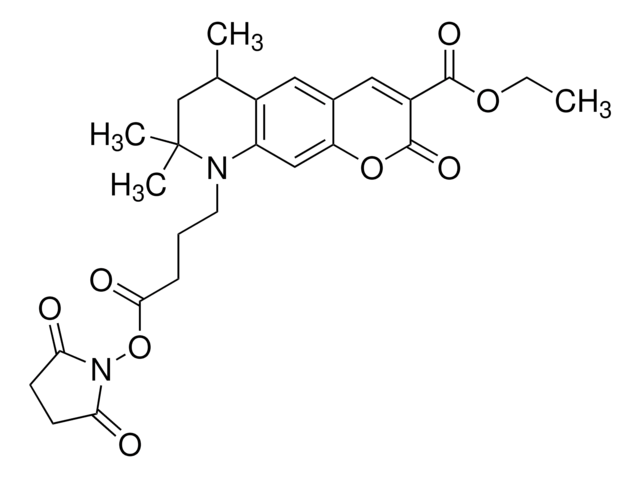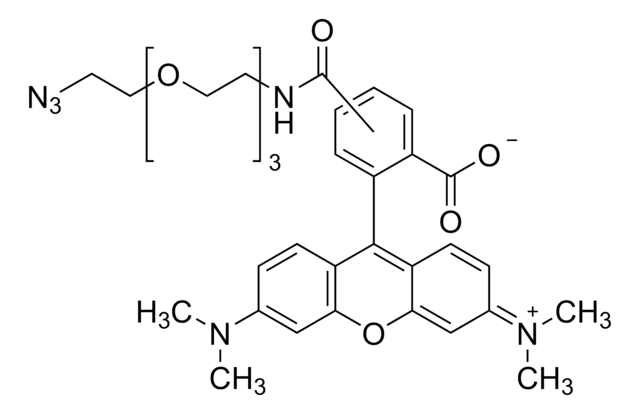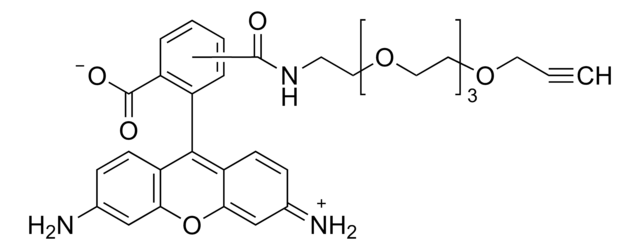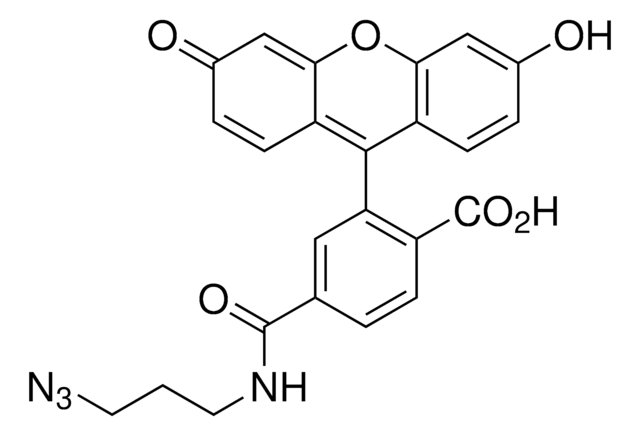41986
Atto 550 azide
BioReagent, suitable for fluorescence
Sign Into View Organizational & Contract Pricing
All Photos(1)
About This Item
UNSPSC Code:
12352125
NACRES:
NA.32
Recommended Products
product line
BioReagent
Quality Level
assay
>90% (HPLC)
manufacturer/tradename
ATTO-TEC GmbH
transmittance
254 nm
550 nm
fluorescence
λex 554 nm; λem 576 nm±10 nm in 0.1 M phosphate pH 7.0
λ
(ethanol with 0.1% trifluoroacetic acid)
UV absorption
λ: 553-559 nm Amax
suitability
suitable for fluorescence
storage temp.
−20°C
Legal Information
This product is for Research use only. In case of intended commercialization, please contact the IP-holder (ATTO-TEC GmbH, Germany) for licensing.
Storage Class
11 - Combustible Solids
wgk_germany
WGK 3
flash_point_f
Not applicable
flash_point_c
Not applicable
Choose from one of the most recent versions:
Certificates of Analysis (COA)
Lot/Batch Number
Don't see the Right Version?
If you require a particular version, you can look up a specific certificate by the Lot or Batch number.
Already Own This Product?
Find documentation for the products that you have recently purchased in the Document Library.
Smart-aggregation imaging for single molecule localization with SPAD cameras.
Gyongy, I.; et al.
arXiv (2016)
Robert H Meltzer et al.
Lab on a chip, 11(5), 863-873 (2011-01-21)
Rapid, specific, and sensitive detection of airborne bacteria, viruses, and toxins is critical for biodefense, yet the diverse nature of the threats poses a challenge for integrated surveillance, as each class of pathogens typically requires different detection strategies. Here, we
A molecular toolkit for population genetic investigations of the ash dieback pathogen Hymenoscyphus pseudoalbidus.
Gross, A., et al.
Forest Pathology, 42, 252-264 (2012)
Rahul Roy et al.
Nature methods, 5(6), 507-516 (2008-05-31)
Single-molecule fluorescence resonance energy transfer (smFRET) is one of the most general and adaptable single-molecule techniques. Despite the explosive growth in the application of smFRET to answer biological questions in the last decade, the technique has been practiced mostly by
Eric J White et al.
Clinical chemistry, 55(12), 2121-2129 (2009-10-10)
Epidemiologic studies require identification or typing of microbial strains. Macrorestriction DNA mapping analyzed by pulsed-field gel electrophoresis (PFGE) is considered the current gold standard of genomic typing. This technique, however, is difficult to implement because it is labor-intensive and difficult
Our team of scientists has experience in all areas of research including Life Science, Material Science, Chemical Synthesis, Chromatography, Analytical and many others.
Contact Technical Service




